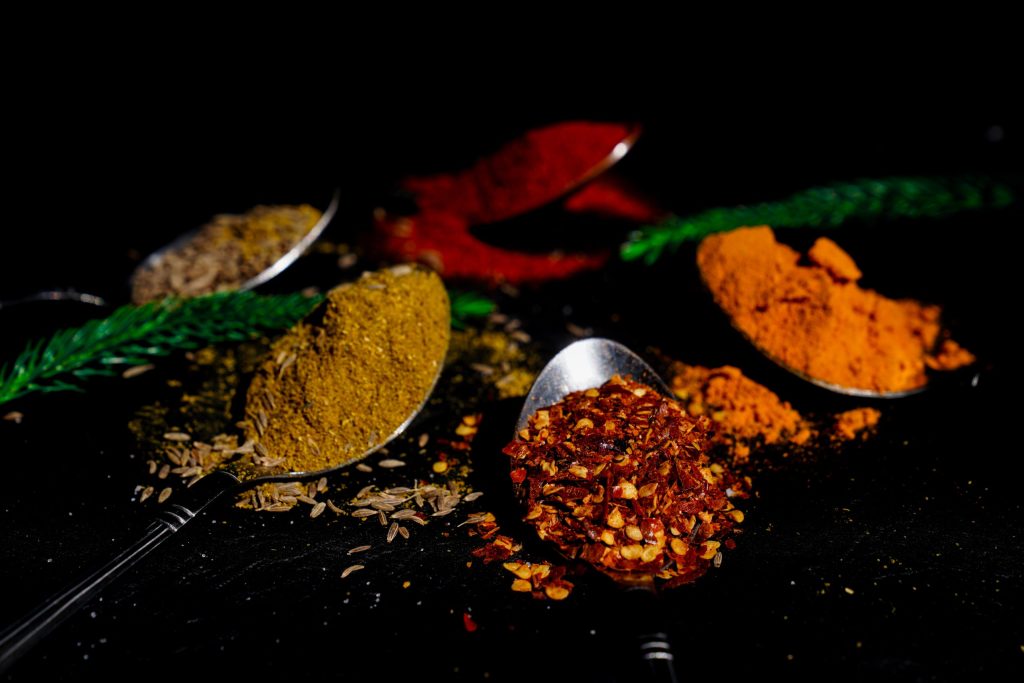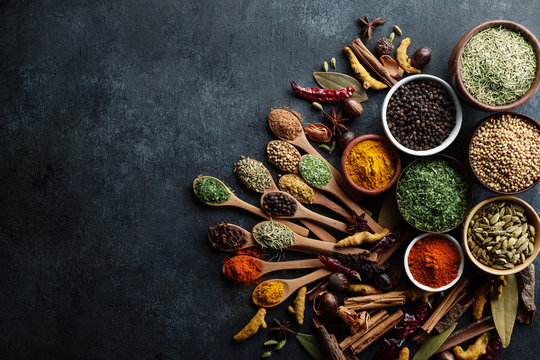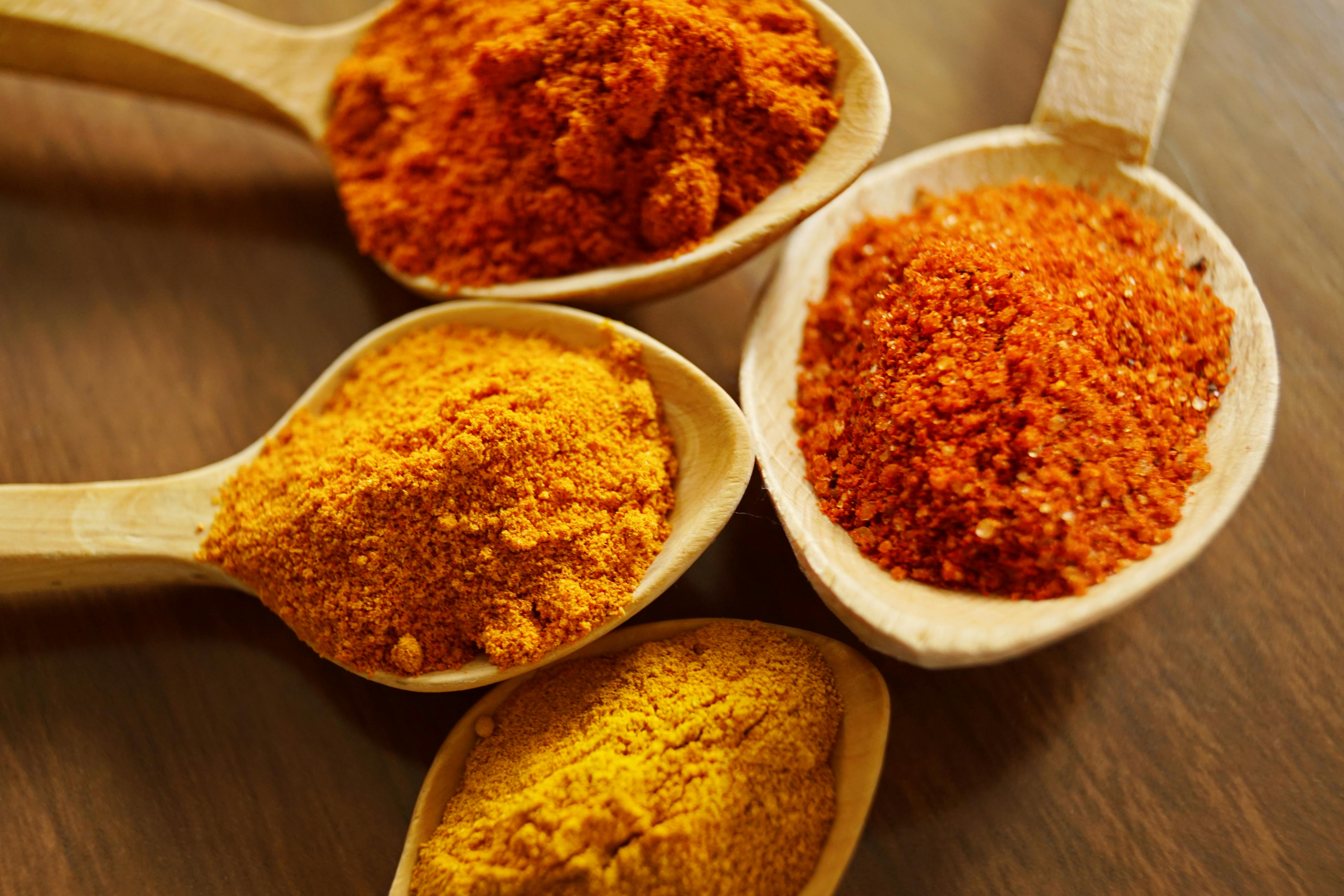In todays article we will know some interesting facts and history of spices. Additionally, some health benefits from particular spices. If you want to spend your time on learning something new? then don’t worry! As you have landed to the right place where you can learn and get to know more something related to food and its culture. Be it any recipe, any famous regional food and the history behind it or any particular Restaurant’s review. So You can follow us for more such knowledgeable content so that you can never miss any golden chance to grow your cooking skills!

The history of India is intricately linked with spices, dating back thousands of years. India has been a major center for spice cultivation and trade since ancient times. Spices like black pepper, cardamom, cinnamon, and cloves were highly valued and played a crucial role in shaping India’s history. The history of spices in India is a fascinating journey that spans thousands of years, marked by trade, cultural exchange, and economic significance. Now Let’s have a brief tour on its Ancient Origins that how spices covered whole over India.
How Spices came to India?
Spices have been integral to Indian culture and cuisine since ancient times, with evidence suggesting their use as far back as 7000 BCE. The Indus Valley Civilization, one of the world’s oldest urban cultures, had trade relations that likely involved the exchange of spices with other ancient civilizations. The spice trade gained momentum around 3000 BCE, with India being a major exporter of spices like black pepper, cardamom, and cinnamon. India’s spice trade attracted merchants from various parts of the world, including the Middle East, Europe, and Southeast Asia.
The demand for these exotic spices led to the development of trade routes, such as the famous Silk Road, connecting India to distant regions. Spices were highly valued in ancient Egypt, Rome, and Greece, with Indian spices being a symbol of luxury and prosperity. Even the mention of Indian spices can be found in ancient texts like the Bible, where they were presented as gifts of great worth.
During the Medieval Period and European Exploration, Arab traders became intermediaries in the spice trade between India and Europe. The arrival of European powers, such as the Portuguese in the 15th century, marked a new chapter. Vasco da Gama’s sea route to India in 1498 opened up direct access to Indian spices, bypassing Arab middlemen. The Dutch and the British East India Companies played significant roles in controlling spice trade routes during the 17th and 18th centuries. The British colonization of India in the 19th century further solidified their control over spice production and trade.
In the medieval period, European powers, including the Portuguese, Dutch, and British, sought to establish control over spice trade routes, leading to the colonization of parts of India.
The spice trade played a significant role in shaping global economic and geopolitical dynamics.
After India gained independence in 1947, the spice industry continued to flourish, and India remains a leading producer and exporter of spices globally. Spices are deeply woven into the cultural fabric of India, influencing rituals, festivals, and daily life.
In essence, the history of spices in India is a testament to the country’s rich cultural heritage, economic significance, and its enduring impact on global trade and cuisine.
The secret of happiness is variety, but the secret of variety, like the secret of all spices, is
source: www.brainyquote.com
knowing when to use it.
Spices were not just commodities for trade; they played a crucial role in Indian cuisine and traditional medicine (Ayurveda). Each region in India developed its unique spice blends, contributing to the diversity of flavors in Indian cooking.
Spices were not only sought after for culinary purposes but also for their medicinal and preservative properties. They became integral to Indian cuisine, influencing the development of diverse and flavorful dishes. Spices like turmeric, ginger, and black pepper were not only used for flavoring food but also for their therapeutic benefits.
Overall, the rich history of Indian spices reflects their cultural, economic, and geopolitical significance, contributing to India’s influence on global trade and cuisine.
Infact spices held religious importance in ancient Indian societies. They were often used in rituals, and certain spices were considered sacred. The use of incense and aromatic spices in religious ceremonies contributed to the spiritual and sensory experiences of worship. In ancient texts like the Arthashastra, spices were mentioned as valuable commodities and symbols of prosperity.
Certainly! Indian spices have a rich history, diverse origins, and play a crucial role in Indian cuisine, culture, and traditional medicine like:
Cinnamon:
- Origin: Southern India.
- Story: Traded along ancient routes, prized for its sweet flavor.
- Places: Grown in Kerala and Karnataka.
- Specialization: Ceylon cinnamon is widely used in Indian cuisine.
- Importance: Adds warmth to both sweet and savory dishes.
- Medical Benefits: Antioxidant, anti-inflammatory, and potential blood sugar regulation.


Turmeric:
- Origin: Indigenous to the Indian subcontinent.
- Story: Used for centuries in Ayurveda, it has deep roots in Indian culture and rituals.
- Places: Grown mainly in states like Andhra Pradesh, Karnataka, Tamil Nadu, Odisha, and West Bengal.
- Specialization: Known for its vibrant color, it’s a staple in curry powders and has antiseptic properties.
- Importance: Integral to Indian cuisine, used in religious ceremonies, and considered auspicious.
- Medical Benefits: Anti-inflammatory, antioxidant, and potential health benefits for various conditions.
Cardamom:
- Origin: Southern India and Sri Lanka.
- Story: Traded along ancient spice routes, valued for its aroma and medicinal properties.
- Places: Kerala, Karnataka, and Tamil Nadu are major producers.
- Specialization: Green and black cardamom varieties; used in both sweet and savory dishes.
- Importance: A key component in Indian sweets, chai, and savory dishes.
- Medical Benefits: Digestive aid, antimicrobial properties, and potential cardiovascular benefits.

Cumin:
- Origin: Mediterranean and introduced to India over 4,000 years ago.
- Story: A crucial part of Indian spice trade history.
- Places: Rajasthan, Gujarat, and Uttar Pradesh are major producers.
- Specialization: Ground cumin is a common spice in Indian cuisine, especially in spice blends.
- Importance: Adds a distinct flavor to various dishes, used in both powdered and whole form.
- Medical Benefits: Digestive aid, rich in antioxidants, and potential anti-diabetic properties.
Black Pepper:
- Origin: Native to the Malabar region in India.Story: Traded globally, known as the “king of spices.”
- Places: Kerala, Karnataka, and Tamil Nadu are prominent producers.
- Specialization: Used in various forms, from whole peppercorns to ground pepper.
- Importance: Enhances flavor in almost all Indian dishes.
- Medical Benefits: Digestive aid, antioxidant properties, and potential respiratory benefits.
These spices not only contribute to the vibrant flavors of Indian cuisine but also hold cultural, religious, and medicinal significance in the country’s heritage. Their use extends beyond the kitchen, playing a vital role in holistic well-being through traditional medicine practices like Ayurveda.
